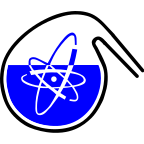Speaker
Description
The techniques of highly sensitive mass spectrometry is achieving rapid development recently. Several elements or nuclides that were not supposed to be applicable in that technique are now quantitatively analyzed. Especially, for long-lived actinides elements, the techniques are becoming more and more important as a promising alternative of radioactivity measurements. The tracer nuclide for chemical recovery determination, which has to be non-existent in nature and not contained in target samples, is absolutely necessary for that purpose. Tracers for several elements are available now, but the tracer for neptunium has not been developed, yet. We seek for an efficient method for production of Np-236 in the ground state of 1.54×10^5 y in half life as a candidate of the tracer nuclide.
In present study, we try the Np tracer production in the reactions of Th-232 + Li-7 and U-238 + p to aim to perform an application for Np contamination in environmental samples as the goal.
For irradiation of beam, two types of target stacks were prepared. One includes several targets of electrodeposited Th or U of ca. 1 mg/cm^2 on Al foils. The other includes a thick target disc of 100 mg/cm^2 Th or U. The former stack was utilized to check the production rate and interfering products depending on the projectile energy dumped in the stacking targets, and the latter was for the total properties. Foil of silver or copper of natural abundance was also used to monitor beam intensity calculated from produced radioactivity of In-111 or Zn-65 during the irradiation as well as current monitoring with a Faraday cup in the beam course.
We have performed irradiation with Li-7 ions of 42 MeV at the AVF cyclotron of RIKEN and proton of 39 MeV at the AVF cyclotron of RCNP of Osaka University. In order to isolate Np atoms from the irradiated targets, the chemical procedures were performed. As an example for irradiated Th samples, the target material was dissolved in 3M HNO_3 with Np-237 tracer for checking chemical recoveries and dried up in heating. Then, procedure of dissolution of the residue in conc. HNO_3 and drying up was repeated three times. Finally, the sample was dissolved again in conc. HCl, and adjusted to the 10 M HCl solution of 4 mL. The solution was subjected to the separation procedure using a TEVA resin column and treated with 10 M HCl, followed by 3 M HNO_3, for purification, and finally 0.1 M HCl for elution of Np.The purified samples of Np were subjected to alpha spectrometry and gamma spectrometry to check the by-products emitting radiation.
As a preliminary result, the measured gamma spectra show that the final solution from the sample was still contaminated by protactinium products. The intensities of uranium X-rays and the gamma rays following decay of Np-236m of 22.5 h in half-life suggest that the production rates of Np-236g were around 5×10^9 atoms/g-Th/h/p micro A and 5×10^10 atoms/g-U/h/p micro A, assuming the isomeric ratio of products, m/g, of ca. 5. The ratio was estimated from production data of the same nuclides in proton induced reaction of 238U1). Spiking amount of Np-236 per sample is estimated to be around 10^8-10^9 atoms.
Analysis of the results is still in progress and additional experiments are under planning at present.
Reference
1) J. Aaltonen, M. Brenner, S. A. Egorov, A. M. Fridkin, V. B. Funschtein, E. A. Gromova, P. Manngård, V. A. Rubchen’a, Yu. A. Selitsky, V. A. Yakovlev, and V. S. Zenkevich: Phys. Rev. C41, 513 (1990).

